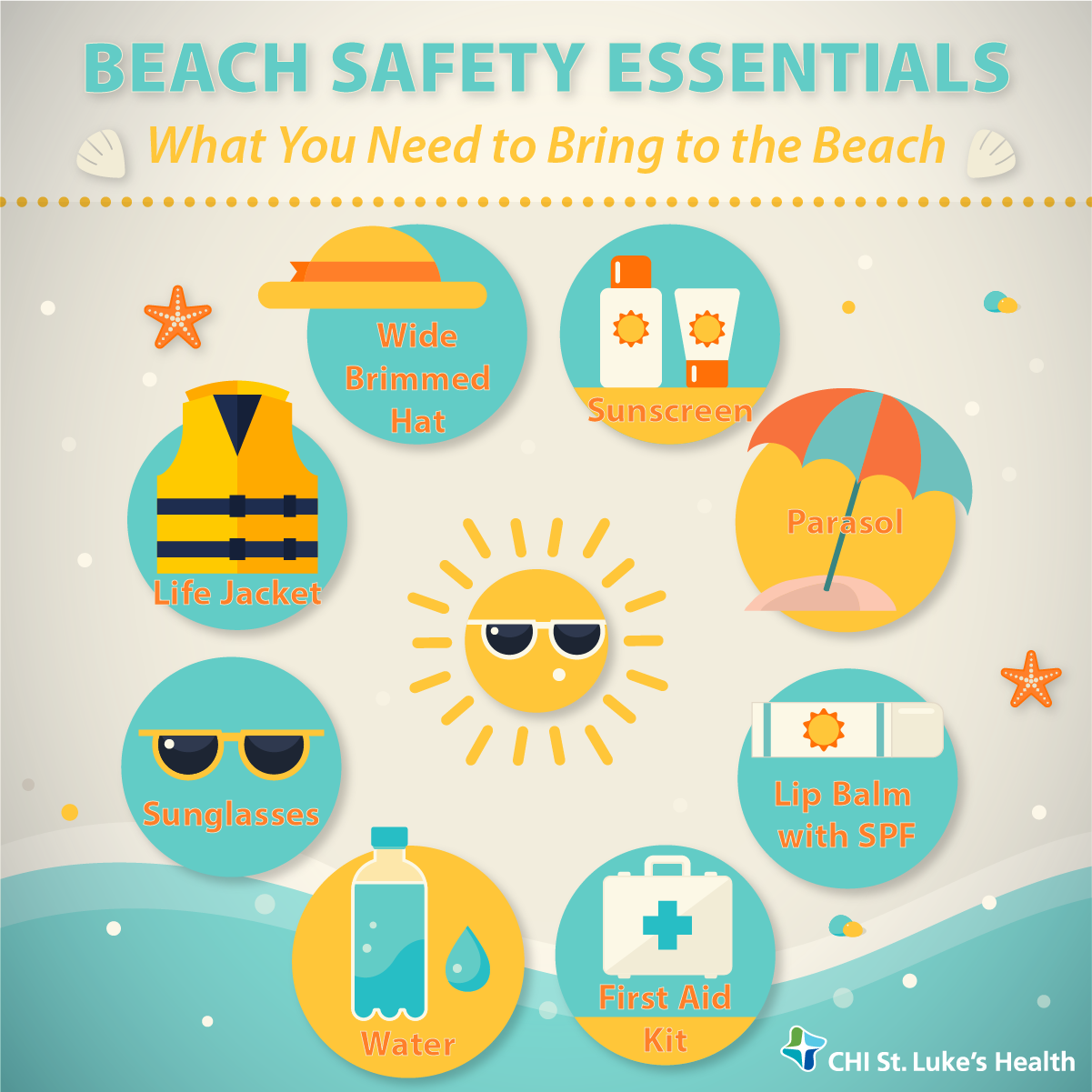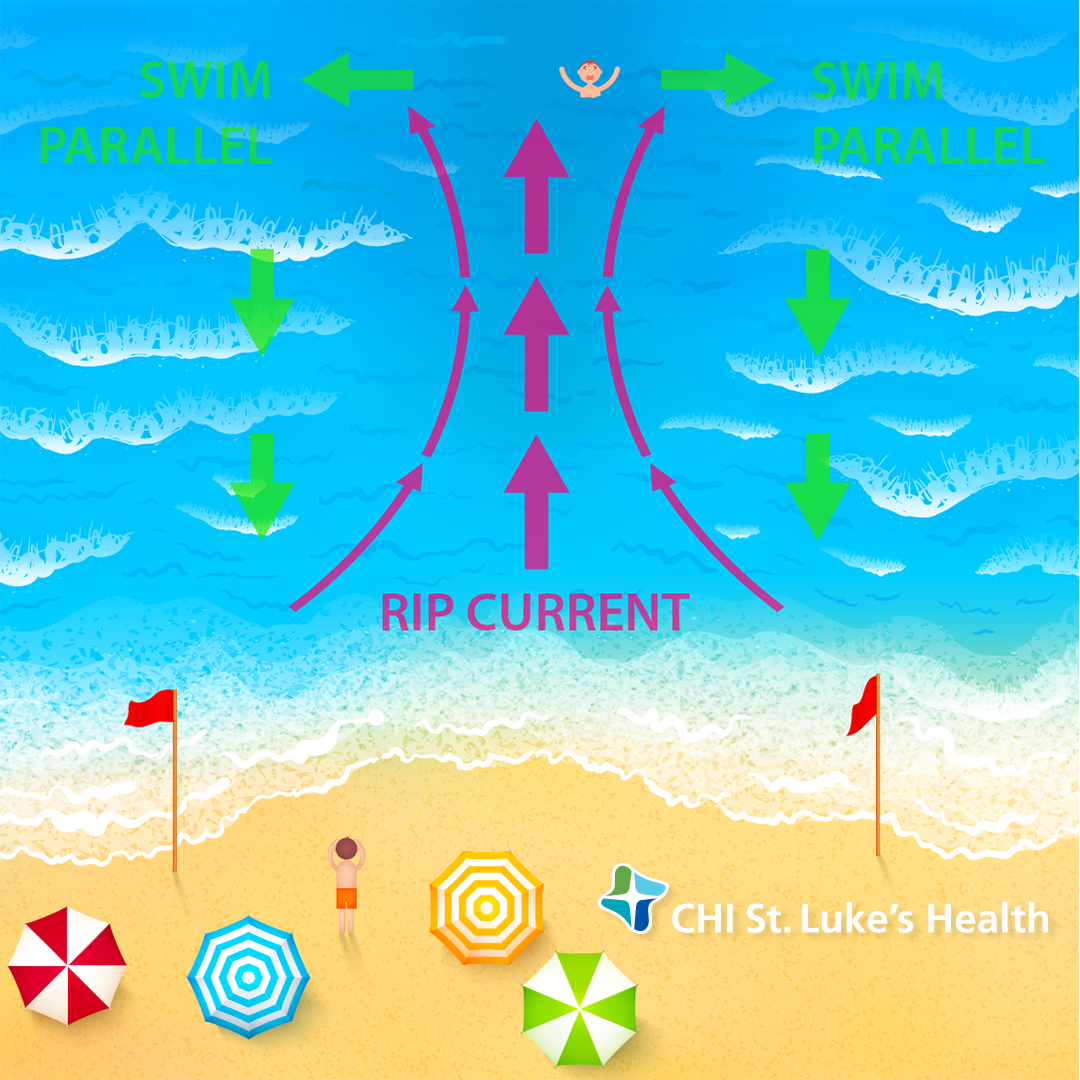St. Luke's Health joins CommonSpirit.org soon! Enjoy a seamless, patient-centered digital experience. Learn more

Are you heading to the beach this summer? Be sure to keep sun and swim safety in mind. Brush up on your beach safety knowledge and share these important tips with friends and family before hitting the sands.
Decrease your risk of skin cancer, skin damage, and premature aging by protecting your skin. If you find a suspicious spot on your skin, schedule an appointment to get it checked out immediately.
The higher the temperature, the higher the risk for heat-related illnesses, like heat exhaustion and heat stroke. These dangerous conditions can be prevented by keeping your cool.
Use our Beach Safety Essentials infographic to make sure you bring important safety items with you to the beach.

Whether you are surfing, swimming, or floating, follow these ocean safety tips at all times.
According to the U.S. Lifesaving Association, rip currents account for 80% of rescues performed by beach lifeguards. Rip currents form when water moves away from the shore. If you are caught in a rip current, do not swim against it. Stay calm and swim parallel to the shore until you feel the current release; then you can swim toward the shore. If the force of the current is too strong or you are not a strong swimmer, tread water and float in the current until it weakens. Wave your arms and call for help if needed. Share this life-saving information with your loved ones.

Baylor St. Luke’s Medical Group The Woodlands wishes you and your family a healthy summer and a safe vacation.
Sources:
Summer Beach Time Means Water Safety
Stay Safe in the Water This Spring Break
Looking for a doctor? Perform a quick search by name or browse by specialty.